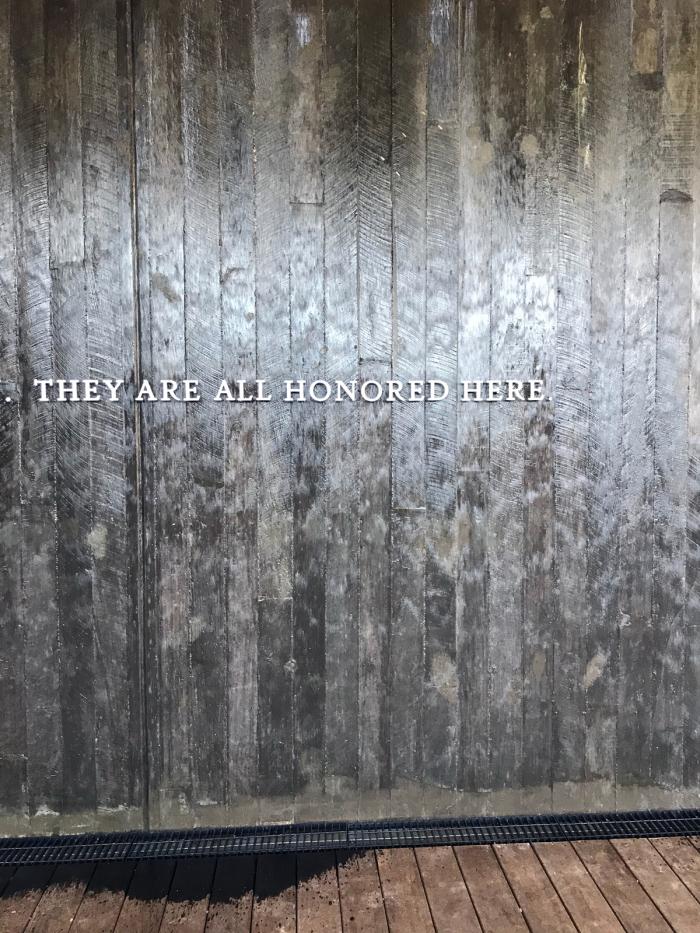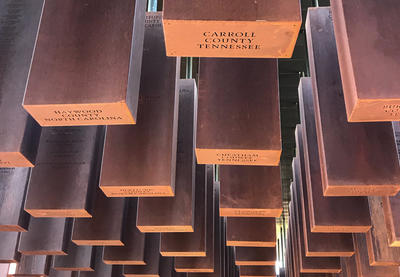Editor’s note: As you may know, Teaching Tolerance is located in Montgomery, Alabama, a city known as both the “Cradle of the Confederacy” and the “Birthplace of the Civil Rights Movement.” History here is rich but also fraught, which is why the opening of the Equal Justice Initiative’s National Memorial for Peace and Justice and the Legacy Museum are so important to us. Lauryn Mascareñaz, one of our teaching and learning specialists, visited the memorial and shares her reflections on the significance of this space.
The National Memorial for Peace and Justice sits in a small neighborhood overlooking Montgomery, Alabama. There are flowers growing at the entrance. The purples and reds of spring’s first colors are a stark contrast to the environment around them—like life itself is springing up from the dusty, empty lots and boarded-up homes that are so familiar here.
As you enter the memorial, the silence envelops you. There are signs everywhere to tell you, “This is a sacred space,” but they need not be posted. People walk in silence and speak in hushed tones. Normally rambunctious children and fussy infants alike are silenced by the solemnity of those around them. People are bowed over and praying, holding hands and staring, or reaching out a hand to gently touch a wall.
The magnitude of the memorial cannot be overstated. The pillars, one representing each county where a lynching occurred, number 800. Yet the names engraved upon the pillars number in the thousands. Walking through the labyrinth of rust-colored, six-foot blocks, you feel the story of each piece of metal as they begin to surround you. You walk further and watch as these blocks, these names, these lives rise above you. Their memory is anchored by steel to their final resting place.

As you read the names and dates on each pillar, you begin to notice similarities. Multiple deaths on one day show us a massacre; shared last names show a family all killed on the same day. There are blocks from counties that saw so many lynchings that the print must be tiny to fit all the names, and there are blocks from counties where one lone name is carved solemnly in the center.
Each person who visits this memorial is witness to our nation’s attempt to reconcile our past. They take that experience with them and, I hope, leave seeing the world with a different perspective than before. As we have heard again and again, how do we move forward if we do not remember where we came from?
The treatment of black people in the United States, from enslavement into the present day, is a sad and excruciatingly painful story. As we try to move into the future, making a more equitable society for all, we must remember that history is still being written. How we choose to remember, honor and atone for the lives of those so brutally taken will dictate how we as a nation move forward.
Mascareñaz is the director of Equity Affairs for Wake County Public Schools and a former teaching and learning specialist for Teaching Tolerance.
